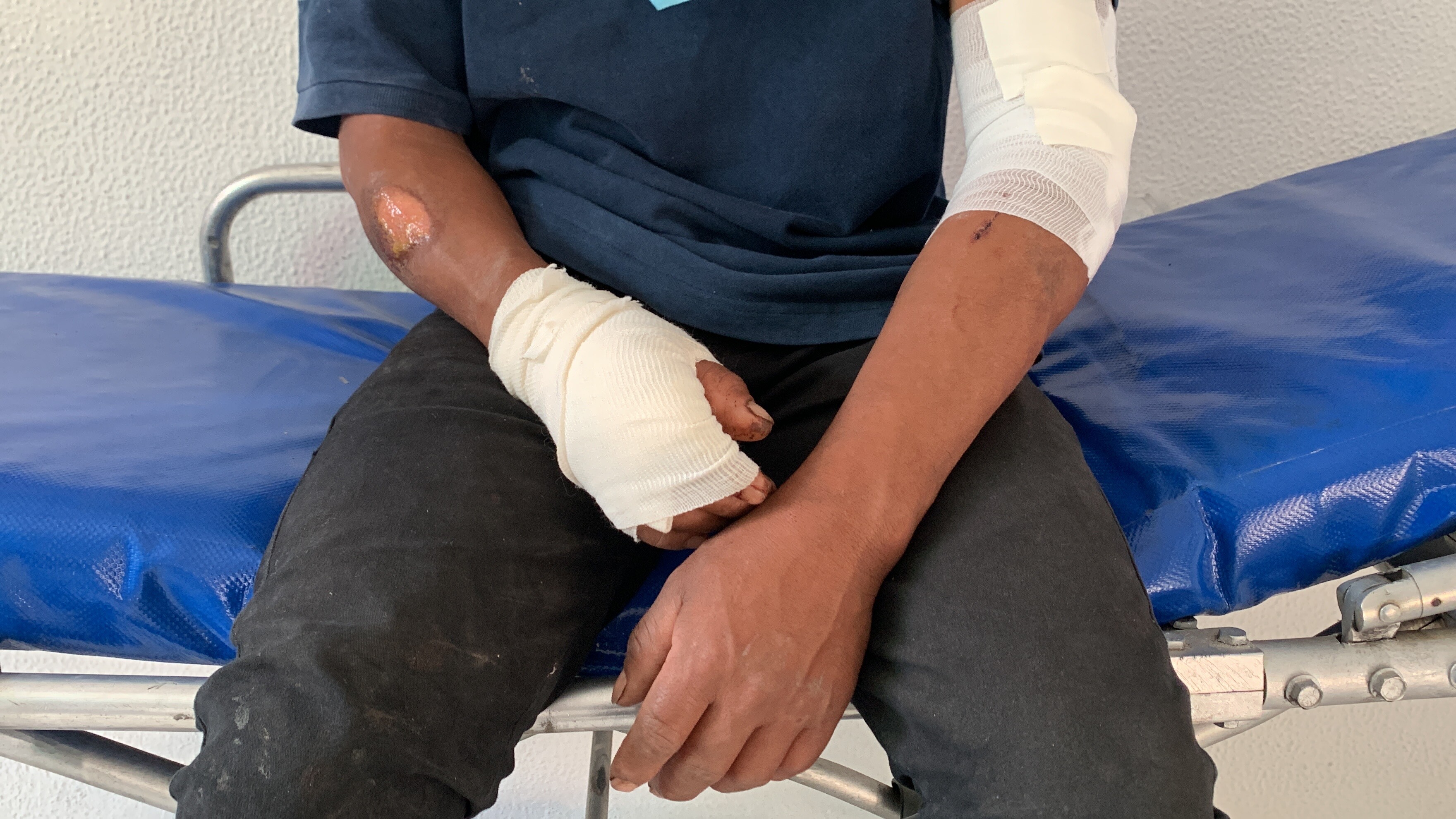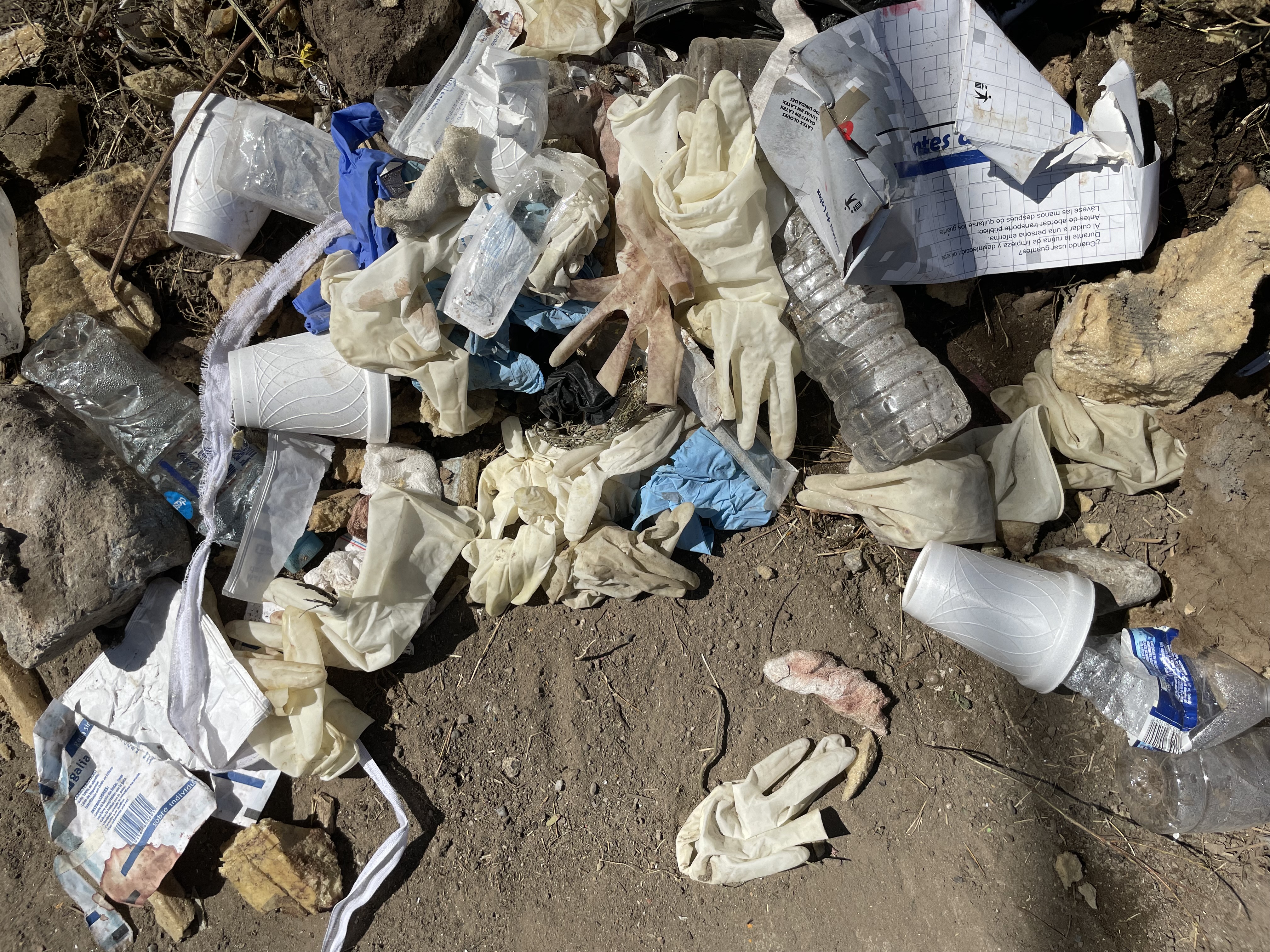‘It Was Slaughter’: Migrant Crash Victims Paid Thousands to Reach the US
December 11, 2021TUXTLA GUTIERREZ, Mexico — The two cousins, 15 and 16, set out Wednesday afternoon from Guatemala. Guided by smugglers, they traveled by bus to Mexico. And then they were told to climb into the back of a tractor trailer along with more than 150 other Guatemalan migrants. The cousins’ desired destination: New York.
But they made it less than three hours in the tractor trailer, packed in so tightly that every other person was standing. As the truck rounded a curve in the southern city of Tuxtla, Gutierrez the next day, the driver lost control and slammed into a lightpost. The trailer detached from the main cabin and flipped over, flinging migrants onto the asphalt and a nearby wall, killing at least 55 and sending another 106 to the hospital.
Fifteen-year-old Byron woke up surrounded by dead bodies, with an elderly man offering him water.
“I am poor,” Byron told VICE World News as he sat dazed in the Red Cross Hospital, explaining his decision to migrate. He said he thought he was traveling “direct to New York” in the tractor trailer (only his first name has been used because he’s a minor).
The tragic accident on Thursday in the state of Chiapas, which borders Guatemala, underscores the risks migrants from fragile, violence-ravaged states in Central America as well as other countries in the region and beyond are continuing to take to reach the U.S., despite policies aimed at deterring them. It also highlights the weaknesses of a U.S. strategy that relies on Mexico to stop the flow of migrants before they reach the countries’ shared border U.S. The tractor trailer passed through at least two government checkpoints during its two-hour trip, including one just a mile before the accident site.
Adult migrants traveling in the trailer were being charged around $13,000 to reach the U.S., according to survivors VICE World News spoke with. Unaccompanied minors were charged the lesser price of $4,000, because under the Biden administration they can turn themselves into U.S. Border Patrol agents once they reach the U.S.-Mexico border and be allowed in. Most migrants pay the fee in installments over the course of the trip.
With 1.7 million migrants apprehended at the U.S. border last fiscal year, the most ever recorded, the human smuggling industry is booming. Even by conservative estimates, it’s estimated to be worth billions of dollars.
Mexican President Andrés Manuel López Obrador accused the U.S. on Friday of moving too slowly to address the root causes of migration. “They don’t act in an executive manner when this deserves urgent attention.”
Mexico’s Foreign Minister Marcelo Ebrard said that Mexico, Guatemala, the United States and other countries would work together to identify the members and leaders of the “transnational criminal organization responsible for this human tragedy.”
Flanked by Guatemala’s Foreign Minister Pedro Brolo, U.S. Ambassador Ken Salazar and ambassadors from Honduras, Ecuador, Guatemala, and the Dominican Republic, Ebrard said that each country would carry out its own investigation and then share information, both to investigate the crash and “to fight human trafficking in all its manifestations.”
But few of the accident victims described themselves as being trafficked. Instead, they said they had taken out loans and put up land as collateral to pay for the journey in the hopes of reaching the U.S. and making a better life for themselves and their families. “It doesn’t matter what happened, we have to keep trying. To improve our lives,” said Elvia, Bryon’s 16-year-old cousin.

Ninety-eight percent of the accident victims were from Guatemala, according to Mexican authorities. Most likely arrived in Mexico in recent days through blind spots on the Guatemala-Mexico border. Led by smugglers, they met up Wednesday in San Cristobal de las Casas, a touristy town in southern Mexico. Around 1 p.m. that afternoon, they climbed into the back of the tractor trailer to continue their journey north.
Smugglers adjust their fees depending on the mode of transportation, and traveling in tractor trailers tends to be one of the cheaper options. There are also VIP options, including in recent years express buses that are safer and deliver Guatemalans to the border in a matter of days.
The Mexican attorney general’s office said that the primary cause of the accident was speeding. The trailer is registered to a company that boasts 24-7 monitoring of the cargo to ensure its security. The driver of the tractor trailer fled following the accident and hasn’t been found.
“I have never seen so much death. It was a slaughter,” said Jorge Goméz, whose house sits in front of the highway and was one of the first people to respond to the accident. He said dozens of victims died on impact. Others were found alive beneath dead bodies. Some survivors fled immediately because they were scared, he said, adding that passersby stole the cell phones of the dead.
“It makes me angry. Furious,” Goméz said. “A thousand meters away is a checkpoint. How is it possible that they let the trailer pass?”

By Friday afternoon, less than 24 hours later, the scene of the accident was barely noticeable. Cars and trucks sped by the only evidence of the tragedy: Piles of bloodied surgical gloves and a small shrine with candles and some flowers.
Byron was already thinking about his next attempt to reach the U.S. His dream is to own a restaurant, he said. Still beat up and bandaged, he asked, “Can we get directly to the U.S. from here?”
Nathaniel Janowitz and Elisabeth Malkin contributed reporting from Mexico City.
